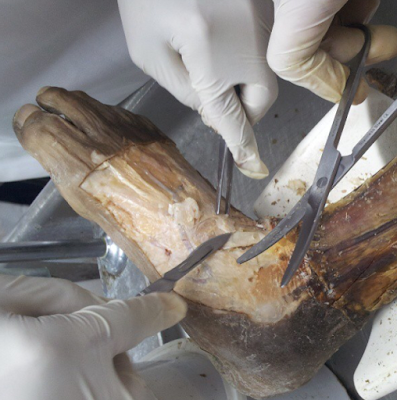On
the western bank of the Ganges in the ancient city of Varanasi, the
fires of the Manikarnika Ghats have been burning for thousands of years. This
holy city, in Uttar Pradesh, India, is the most sacred place on earth
for Hindus and it is believed that if a person’s ashes are scattered
here then their soul will finally achieve nirvana (moksha). But to liberate the soul, the worn-out body must first be burned. A
series of stunning and rare images, captured by photographer Michal
Huniewicz, give a remarkable insight into the last hours of the Hindu
body at Manikarnika Ghats - the largest cremation site in Varanasi.
Up to 300 people a day are cremated at this ‘burning ghat’, named for the steps that lead down to a body of holy water.For
centuries, the old and sick have flocked to the site to die here on the
banks of the Ganges, and special buildings on the site are reserved for
those awaiting their final hours. But
the atmosphere at the giant funeral site is not one of sorrow, as
mourners instead laugh, chat and play cards as the funeral preparations
are carried out.The
Hindu attitude to death is not one of loss, but instead follows the
idea of ‘shedding’ the worn-out body, as one might throw away clothes
that are too worn-out to wear.
 |
| The Manikarnika Ghat fires in Varanasi is the most sacred place for
Hindus to be cremated. Here, piles of wood are stacked for burning, cows
and goats can be seen alongside male family members and spectators
observing the cremations from boats on the river |
 |
| A shrouded body is taken into the Ganges to be washed and prepared ready
for cremation at the Manikarnika Ghats, where Hindus have been cremated
to have their souls liberated from their bodies for thousands of years |
 |
| Two tourists, who are encouraged to witness the ritual, sit in a boat on
the Ganges in front of a large heap of hot human ashes in the
background. |
 |
| Death is believed to be contagious and it is only Doms, a subcaste of the Untouchables, that is allowed to touch dead bodies |
 |
| Piles of mango wood logs, which are cheaper than sandalwood, are used for burning human bodies. |
 |
| A body is taken down to the Ganges on a bier, wrapped in an orange shroud. It should be burnt in 24 hours of death |
 |
| The body is taken down to be immersed in the river by family members on a
bamboo bier. The man in white is the closest male relative to the
deceased, who is tasked with carrying out the funerary rites. The only
women that tend to be present are foreign tourists |
 |
| The body is briefly immersed in water before being carried back up the stairs before the cremation begins |
 |
| The bodies are left on the stairs for about two hours so they can dry before the cremation takes place nearby |
 |
| When the body, which may have been left alone, is sufficiently dry it is taken by the family members to the burning pit |
 |
| The bodies are left on the stairs, or ghats, for hours. Young boys, most probably relatives of the deceased, sit and wait |
 |
| The Doms charge for the cremation itself, but also take a cut from the expensive wood sold near the ghats |
 |
| The pits are located on four different levels, one for each caste. Those pictured are from the Kshatriya (warrior) caste |
 |
| The body is freed from the rope and ready to be placed on the pyre and covered with the wood the family has bought |
 |
| A typical funeral pyre requires 300 kilograms of wood to burn the body sufficiently. |
 |
| Wealthier families may choose to use the much more expensive sandalwood
instead of the cheaper mango wood, while the poorest may just use cow
dung, and some simply throw the body directly into the river |
 |
| Clarified (and edible) butter called ghee smeared on the wood. In the
old days, ghee was also used to fill the body before burning |
 |
| Sandalwood powder is poured over to cancel out the smell of burning hair. Surprisingly, this does not smell unpleasant |
 |
| A relative scatters some sort of incense, possibly black musk from Nepal, over the remains before the wood is lit |
 |
| The man lighting the pyre is likely to be the eldest son or closest male
relative. He shaves his head and wears white out of respect |
 |
| A cloud of smoke is released from the pyre. The Dom sits beside the cremation site to make sure the fire keeps burning |
 |
| A dog lying at the ancient site is covered in ash from the fires of the Manikarnika Ghats |
 |
| Heavy wood on top of the body is important as heat causes muscles to contract which could cause the body to sit up |
 |
| Bamboo sticks are used to ensure the body is broken down in the fire as part of the Hindu practice of burning ghats |
 |
| Cremation is preferred among Hindus as fire is believed to purify so
the individual's spiritual essence can be freed from the body |
 |
| Joss sticks and various incense are used at the site to avoid the place smelling of the hundreds of bodies cremated every day |
 |
| An aerial photograph shows the fires burning at the Manikarnika Ghats on the banks of the Ganges from above |
All photos credit: Michal Huniewicz





















































